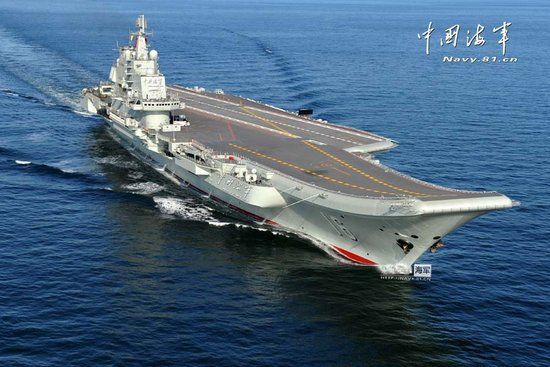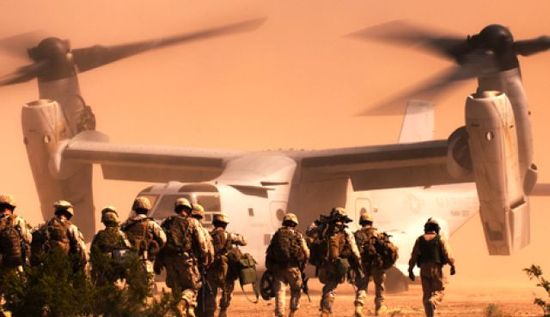by David Parmer
Are weapons systems just the best hi-tech engines of war that a country can field at a given time, or can they give us a clear insight into the way a nation sees its future political-military role regionally or globally?
After landing in Qingdao on April 7, U.S. Secretary of Defense Chuck Hagel was treated to a rare look at China’s first aircraft carrier, the Liaoning. Hagel was the first foreign visitor to set foot on the vessel. He reportedly toured the ship and chatted informally with crew members. After the visit the media speculated on the deeper meaning of the visit. Many suggested that it showed a willingness to engage in greater transparency on the Chinese side. Whatever the reason for the visit, the ship itself is no real mystery.
Launched in Russia in 1990, she was bought by the PRC from Ukraine and towed ( in an event-filled voyage) to Dalian, China in 1990. The cover story of the hull being used as a floating casino was dispensed with, and refitting began. The ship was re-named the Liaoning in honor of the province in which the refitting took place. It was later berthed at Qingdao in Shandong province. On September 25, 2012 the Liaoning was commissioned as a PLA Navy aircraft carrier. At the time of Secretary Hagel’s visit, the U.S. Department of Defense News reported that the Liaoning featured three launch stations for jets, and had a crew of 1500 sailors ( 90 females), 1/6 being officers. The Liaoning reported will accommodate 30, Chinese-built J-15 fighters. Several sea trials have already taken place since the 2012 commissioning.
The V-22 Osprey is a tilt-rotor aircraft with both airplane and helicopter capabilities. It can perform both short takeoff and landings (STOL) and vertical takeoffs and landings (VTOL). It was jointly developed by Bell Helicopter and Boeing Rotorcraft Systems. According to Boeing, it can carry 24 combat-ready troops or 20,000 pounds of cargo. It has a range of 600nm and a maximum cruising speed of 280 knots. The Osprey has mid-air refueling capabilities as well.
The program that led to the development of the Osprey began in 1981, with the first flights in 1989. The U.S. Marines began operating the aircraft in 2007. Currently the Marines and U.S. Air Force operate more than 200 Osprey. Since its introduction, it has seen combat duty in Iraq and Afghanistan.
Accidents plagued the Osprey, and there has been a lingering doubt about its reliability despite the fact that, according to Boeing, it has “the lowest Class A mishap rate of any tactical rotorcraft in the Marine Corps during the past decade.” (Boeing.com) This was partly the cause of strong local opposition in April-June 2012 to the deployment of the Osprey to Futenma in Okinawa, Japan. Despite the opposition the aircraft was deployed in July 2012. In June 2013 during operation Dawn Blitz off the coast of California, Osprey were landed on Japan Maritime SDF vessels Shimokita and Hyuga. Osprey reportedly cost $70million each, and have an operating cost of $10,000/hour.
What can we infer from the deployment in the region of these two weapons systems? In the case of the Liaoning, with the commissioning of the ship China joined the aircraft carrier club, an exclusive group of 11 members. The U.S. leads the way with 11 carriers, with most other members having one or two at most. Aircraft carriers enable countries to project power well beyond their nautical boundaries. So is the purpose of buying, refitting, commissioning and operating the Liaoning to send out a state-of-the-art aircraft carrier? Probably not. But if a country is intent on building a naval air arm, it has to start somewhere, and the Liaoning is “somewhere.” Even if China could deploy the flotilla of ships necessary to service and protect the Liaoning, it would be no match for a U.S. carrier. The United States has 70-80 years experience with carrier-based naval aviation, China has a year and a half. Japan too, has vast experience with carrier-based naval aviation. Time magazine reports that China is now working on a second and home-made carrier, with four planned by 2020. So what is the Liaoning? It would be safe to say that it is at least two things: a symbol of China’s yet-to-peak rise to major regional and world power, and a floating university for the PLA Navy’s carrier-based fleet.
And what does the deployment of the V-22 Osprey in Japan say about Japanese and U.S. policy for the near future? Probably a lot. The Osprey which caused so much opposition among the Japanese public, might be the very thing that will significantly add to their security. Noted above were the landing of Osprey on Japanese naval vessels during military exercises off California in June 2013. During his recent ( April 2014) visit to Japan, U.S. president Barack Obama made it clear that the U.S. was firm in its commitments to Japan’s defense, including the Senkaku/Diaoyu islands now in dispute between Japan and China. Some strategists suggest that if military action takes place in the islands, it will be short and violent. With the capabilities of the V-22 Osprey, the U.S. could place boots on the ground quickly and in number, or could ferry Japanese SDF troops to Japan naval ships or to landing zones in the islands. The Osprey enables the U.S. and Japan to make a timely and powerful response to any land/sea provocation in the region.
Two weapon systems headed for an inevitable confrontation with the other side’s assets? Not necessarily. The Cold War showed that heavily armed adversaries could face off without major incident for extended periods. But both systems clearly signal readable national intent of the nations involved, and bear close watching in the future.
PDF on Boeing web page: http://www.boeing.com/boeing/rotorcraft/military/v22/
Liaoning Photo: PLA Navy
All information on this post is freely available from non-classified web sources.
 日本語
日本語 English
English 中国語
中国語
